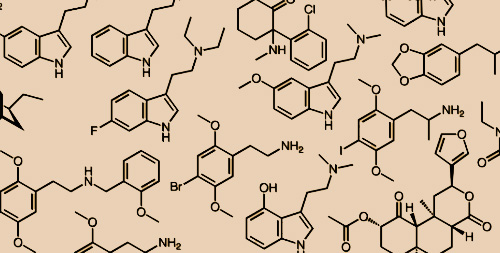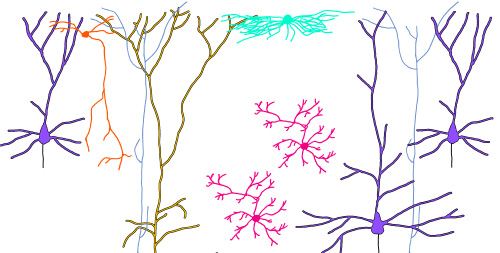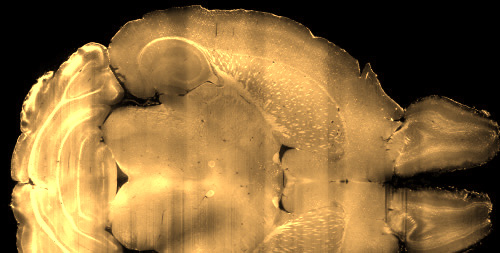Overview
 We are broadly interested in drugs that may be used for treating depression. We want to know how therapeutic behavioral effects are produced by a drug’s action on synapses and neurons in the brain. Many of our experiments involve optical imaging and electrophysiology in awake mice. By gaining neurobiological insights, our long-term goal is to discover effective and safe strategies for treating depression. Current projects in the lab focus on ketamine and psychedelics such as psilocybin and 5-MeO-DMT (Kwan et al., Nature Neuroscience 2022; Kelmendi et al., Current Biology 2022). We have made progress in three specific areas.
We are broadly interested in drugs that may be used for treating depression. We want to know how therapeutic behavioral effects are produced by a drug’s action on synapses and neurons in the brain. Many of our experiments involve optical imaging and electrophysiology in awake mice. By gaining neurobiological insights, our long-term goal is to discover effective and safe strategies for treating depression. Current projects in the lab focus on ketamine and psychedelics such as psilocybin and 5-MeO-DMT (Kwan et al., Nature Neuroscience 2022; Kelmendi et al., Current Biology 2022). We have made progress in three specific areas.
1. Drug action on synapses and dendrites
 Depression is associated with a loss of synapses in the prefrontal cortex. There is growing evidence that antidepressants may counteract the deficit by enhancing synaptic plasticity. Our lab was the first to use two-photon microscopy to demonstrate that ketamine induces rapid remodeling of neuronal connections in vivo (Phoumthipphavong et al., eNeuro 2016). Recent studies showed that the drug-evoked structural rewiring persists for many weeks after a single dose of psilocybin (Shao et al., Neuron 2021) or 5-MeO-DMT (Jefferson et al., Neuropsychopharmacology 2023). We are keen to delineate the molecular and cellular mechanisms that underlie the enduring structural plasticity.
Depression is associated with a loss of synapses in the prefrontal cortex. There is growing evidence that antidepressants may counteract the deficit by enhancing synaptic plasticity. Our lab was the first to use two-photon microscopy to demonstrate that ketamine induces rapid remodeling of neuronal connections in vivo (Phoumthipphavong et al., eNeuro 2016). Recent studies showed that the drug-evoked structural rewiring persists for many weeks after a single dose of psilocybin (Shao et al., Neuron 2021) or 5-MeO-DMT (Jefferson et al., Neuropsychopharmacology 2023). We are keen to delineate the molecular and cellular mechanisms that underlie the enduring structural plasticity.
2. Drug action on cortical neural dynamics
 Behavior is generated by neural activity, which is orchestrated by excitatory and inhibitory neurons in the brain. However, we have a limited understanding of how antidepressants alter the firing patterns of various cell types in local and long-range neural circuits. Our work has revealed how chronic stress, a major risk factor for depression, can progressively cause maladaptive neural activity in the frontal cortex (Barthas et al., Biological Psychiatry 2020). Furthermore, we found cell-type specific action of ketamine on dendrite-targeting interneurons to elevate synaptic calcium signaling (Ali et al., Nature Communications 2020), which may be an essential first step for neural plasticity (Savalia et al.. Trends in Neurosciences 2021).
Behavior is generated by neural activity, which is orchestrated by excitatory and inhibitory neurons in the brain. However, we have a limited understanding of how antidepressants alter the firing patterns of various cell types in local and long-range neural circuits. Our work has revealed how chronic stress, a major risk factor for depression, can progressively cause maladaptive neural activity in the frontal cortex (Barthas et al., Biological Psychiatry 2020). Furthermore, we found cell-type specific action of ketamine on dendrite-targeting interneurons to elevate synaptic calcium signaling (Ali et al., Nature Communications 2020), which may be an essential first step for neural plasticity (Savalia et al.. Trends in Neurosciences 2021).
3. Drug screening tool development
 A key challenge in preclinical drug development lies in the screen of hundreds of compounds to identify a lead to advance to clinical trials. For neuropsychiatric disorders, the targets for screening are often unreliable because the biology is unclear. With expertise in optical imaging technologies (Ali and Kwan, Neurophotonics 2020), we are developing assays to quantify the biological activity of psychiatric drugs in native brain tissues. One area of focus is whole-brain cellular-resolution imaging using light sheet fluorescence microscopy and machine learning. With this approach, we found that ketamine and psilocybin evoke plasticity-related gene expression in numerous similar brain regions, but also have distinct signatures (Davoudian et al, ACS Chemical Neuroscience, 2023).
A key challenge in preclinical drug development lies in the screen of hundreds of compounds to identify a lead to advance to clinical trials. For neuropsychiatric disorders, the targets for screening are often unreliable because the biology is unclear. With expertise in optical imaging technologies (Ali and Kwan, Neurophotonics 2020), we are developing assays to quantify the biological activity of psychiatric drugs in native brain tissues. One area of focus is whole-brain cellular-resolution imaging using light sheet fluorescence microscopy and machine learning. With this approach, we found that ketamine and psilocybin evoke plasticity-related gene expression in numerous similar brain regions, but also have distinct signatures (Davoudian et al, ACS Chemical Neuroscience, 2023).
Funding
We are grateful for current and past support from NIMH, NINDS, NIA, Simons Foundation Autism Research Initiative, Brain & Behavior Research Foundation, One Mind, Epilepsy Foundation, Yale Program for Psychedelic Science, Yale CTNA, and Inscopix DECODE Program.
We appreciate fellowship support for trainees from NIMH, NIDA, NSF, Source Research Foundation, Brain & Behavior Research Foundation, Philippe Foundation, Alzheimer’s Association, and Alzheimer’s Drug Discovery Foundation.